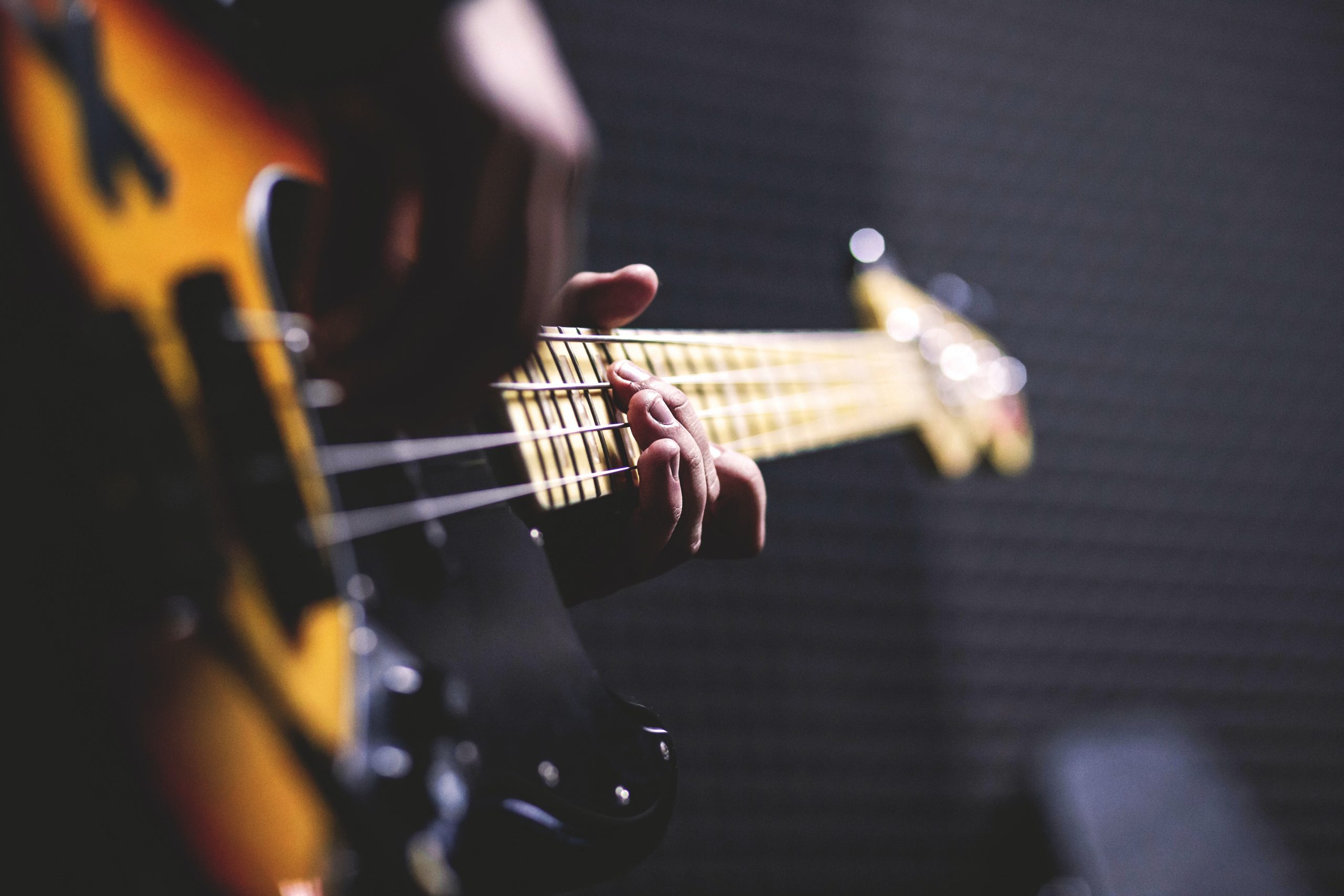If you’re just starting out on the bass guitar, the neck can seem like a daunting place to explore. With so many strings and notes to worry about, where do you even begin?
In this guide, we will take you through the basics of the fretboard, including what each note is called and where it is located. Once you have a basic understanding of the notes on the bass, you will be ready to start learning some songs!
5 steps to learning bass guitar notes
Learning the notes on the bass neck is an ongoing process. There are some concrete steps you can take but there’s always more work that can be done.
The fact that it’s a never-ending process though makes it feel overwhelming for so many beginners.
However, for beginners, the process of learning the notes on the bass guitar fretboard can be split into five distinct and actionable steps which you can take to help you lock the notes into your memory and then use them in your own practice and playing.
Let’s get started with the first step.
Step One: Start Learning Open String Notes
The best way to start learning the notes on a bass guitar is to start with open string notes.
Once you have tuned your bass, you need to identify the low E string. The low E string is the thickest string on the guitar and it is located at the bottom of the bass. It’s also easy to identify as it’s the lowest in pitch.
After you have identified the low E string, you need to pluck it and then identify the note that it is playing. This note is an E. Once you have identified this note, you can move on to the next string which is the A string. The A string is located directly above the low E string. Plucking the A string will produce an A note.
Continue this process for all of the remaining strings.
If you have a four-string bass then next will be the D string and after that is the G string.
If you have a five-string bass then the next string will be a low B string below the E string.
A six-string bass will have the low B from a five-string bass and also a high C string that goes above the G string of a four-string bass.
Step Two: Get yourself a Notation Chart
As you make progress, you’ll start practicing with PDF’s, exercise books and other materials which use notation and you’ll need to know where those notes are on the neck of the bass.
A notation chart, which shows you which fret on the bass produces which note in the notation stave, is an incredibly valuable resource to help you bridge the gap between these two areas.
Before you start learning how to read music, it’s important to have a basic understanding of musical notation. This will help you follow along with written instructions and better understand the music you’re working with.
To get started, you’ll need a notation chart. These can be found online or in music theory books. Once you have your chart, take some time to familiarize yourself with the different symbols and their meaning.
If you can find (or print out) a blank note chart then filling it in from memory is a great way to practice.
This will help you make sense of the notation when you come across it in a piece of music. With a little practice, you’ll be reading music like a pro in no time!
Step Three: Time to start naming notes
Step three is all about moving away from just the open strings and starting to look at fretted notes too.
Using the notation chart that you picked up in step two, you should learn the notes of each fret and then call them out loud as you play a song, riff or just as you’re playing random notes on the neck.
It’s a great test of your memory!
Step Four: Learning and Recognizing Octaves
An octave is the interval between one musical pitch and another with half or double its frequency.
The octave relationship is a natural phenomenon that helps us identify pitches. When two notes are played – one note an octave higher than the other – our brains process them as a single note.
This is because the two pitches produce waves of the same frequency, which our brains interpret as a single tone.
To play an octave on the bass fret any note of your choice, go up two strings and then up two frets. When you play this note you’ll get the same note as the one you started at but at a higher pitch. This is known as being an octave higher.
Octaves are used in many aspects of music, from melodies and harmonies and chord progressions. By understanding octaves, we can better understand how music works and how to create pleasing sounding melodies.
But understanding octaves will also help you understand the logic behind the layout of the bass neck.
Step Five: Learning the Play Bass Scales
If you’re a bass player, learning the scales is essential for being able to improvise and create your own parts.
They can seem like a dry topic, but once you get the hang of them, they’ll open up a whole new world of possibilities for your playing.
They’ll also help you formalize all the notes you’ve learned so far and give you a more useful context to use them in.
Scales can be used to create basslines, play riffs, understand music and also improvise with.
All of these are essential skills for any bass player but these skills must be underpinned by a solid knowledge of the neck.
Best way to memorize bass guitar notes
One of the best ways to memorize bass guitar notes is to practice regularly.
This helps to ingrain the patterns and shapes of the notes into your muscle memory, making it easier to recall them when you need to.
You can also try using mnemonic devices to help you remember the order of the notes. For example, you could create a simple rhyme or phrase that links each note to its position on the fretboard.
Breaking Things Down
Another helpful tip to learning notes is to break down the task into smaller chunks. For instance, start by memorizing the notes on one string, then move on to another string once you have those down.
By taking things slowly and practicing regularly, you’ll be able to commit those bass guitar notes to memory in much less time.
You can take this a step further by trying to name whether the notes on a certain string are natural notes, sharps or flats.
When trying to learn the notes you have to constantly push yourself so adding a little extra challenge like this can be massively beneficial.
The logic of musical notes
Many beginners get confused when naming notes and organizing them into scales.
How do you know when to notes are sharps and flats? Why are some notes natural notes? How are they laid out on the bass guitar fretboard?
Let’s start with scales.
Each scale must have one instance of each letter of the musical alphabet in them.
There must always be some form of A, B, C, D, E, F and G in them.
This explains why a scale like F major has a Bb in it because the letter A has already been used. The notes of the scale are F, G, A, Bb, C, D, E and F.
Depending on which scale a note if part of will determine whether it’s named with sharps and flats or with natural notes.
The logic of the fretboard
Arpeggios, chords and the like are laid out in patterns on the bass guitar neck.
When learning the bass guitar neck, it’s really important to try and memorize the patterns of these things.
Once you can visualize these patterns then the notes on the fretboard will be much easier to remember.
Intervals
In music, an interval is the distance between two pitches. Intervals are typically described in terms of their size, or the number of semitones between the two notes.
For example, a major third interval spans four semitones, while a perfect fifth interval spans seven semitones. In addition to their size, intervals can also be described by their quality, which refers to the type of sound they create.
Each of these intervals can be played by using a certain pattern or shape on the bass guitar fretboard.
Learning these shapes on the bass guitar is another great way to visualize the notes on the bass.


Leave a Reply